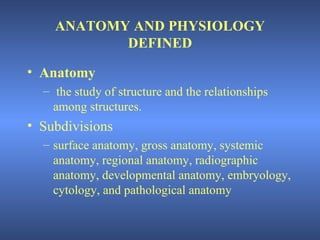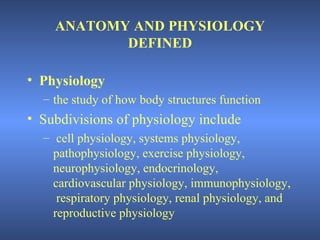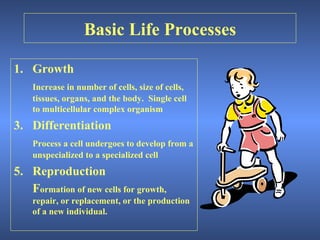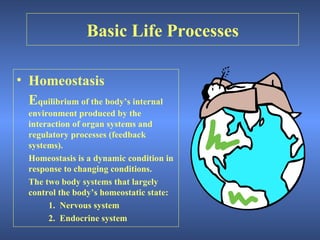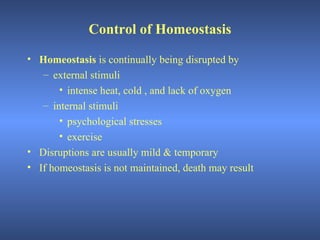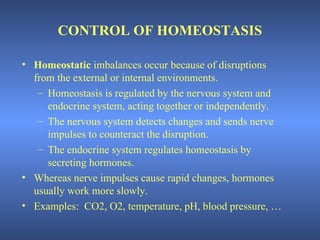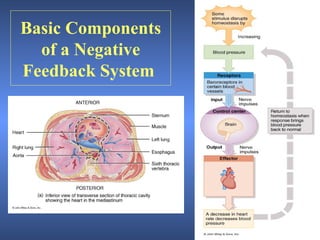This document provides definitions and descriptions of key anatomical and physiological concepts. It defines anatomy as the study of structure and relationships between structures, and physiology as the study of how body structures function. It describes the structural hierarchy of the human body from chemicals to cells to tissues to organs to systems. Key concepts covered include homeostasis, feedback loops, disease, anatomical position and planes, and directional terms.

